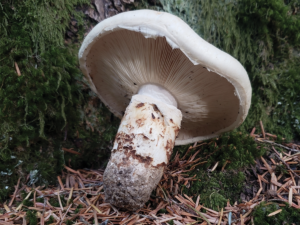The most useful advice to would-be foragers is to check with the property owner before collecting. We gathered rules from two dozen institutions that manage 800,000 acres of local public land.
The default assumption should be that collecting is not allowed. Agencies that prohibit all foraging include the Contra Costa Water District, East Bay Regional Park District, East Bay Municipal Utility District, Land Trust of Napa County, Marin County Open Space District, Marin Municipal Water District, Midpeninsula Regional Open Space District, San Francisco Public Utilities Commission, the city of San Jose, San Mateo County Parks, Santa Clara County Parks, Solano Land Trust, Sonoma County Agricultural Preservation and Open Space District, and Sonoma County Regional Parks.
State park rules vary. A longtime mushroom-hunter favorite, Salt Point on the Sonoma Coast will soon require trainings and daily permits. Contact the park for updates: (707)847-3221. State Fish and Game lands allow regulated hunting and fishing, but collecting mushrooms and plants is generally prohibited.
In our national parks, collection is prohibited at Muir Woods, but Point Reyes National Seashore, the Presidio, and the Golden Gate National Recreation Area allow limited foraging. Point Reyes: “Certain products are available for personal . . . use only in limited quantities: Blackberries, Raspberries, Thimbleberries, Gooseberries, Salmonberries, Huckleberries, or apples–2 quarts per person per day; Mushrooms–2 gallons plus 1 mushroom per adult per day.” GGNRA: “[P]lums, apples, figs, blackberries and unoccupied seashells may be gathered for personal consumption or use in quantities of less than one (1) quart per person per day and no more than 5 total quarts per person per year.” The Presidio: “Reasonable quantities of blackberries and other edible berries . . . for personal use.” Noncommercial collection of a pound of mushrooms per day is allowed in a few areas (details: bit.ly/y5xgWT). U.S. Fish and Wildlife Refuge policies vary by unit, so contact refuge staff for any particular parcel.
Any of these these rules can change at any time, so it’s still best to check before collecting anything. Use Parkinfo.org to find out who owns any public land in California.

.jpg)
